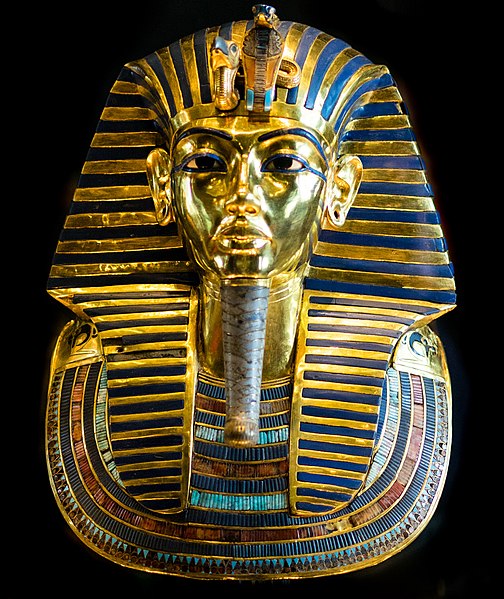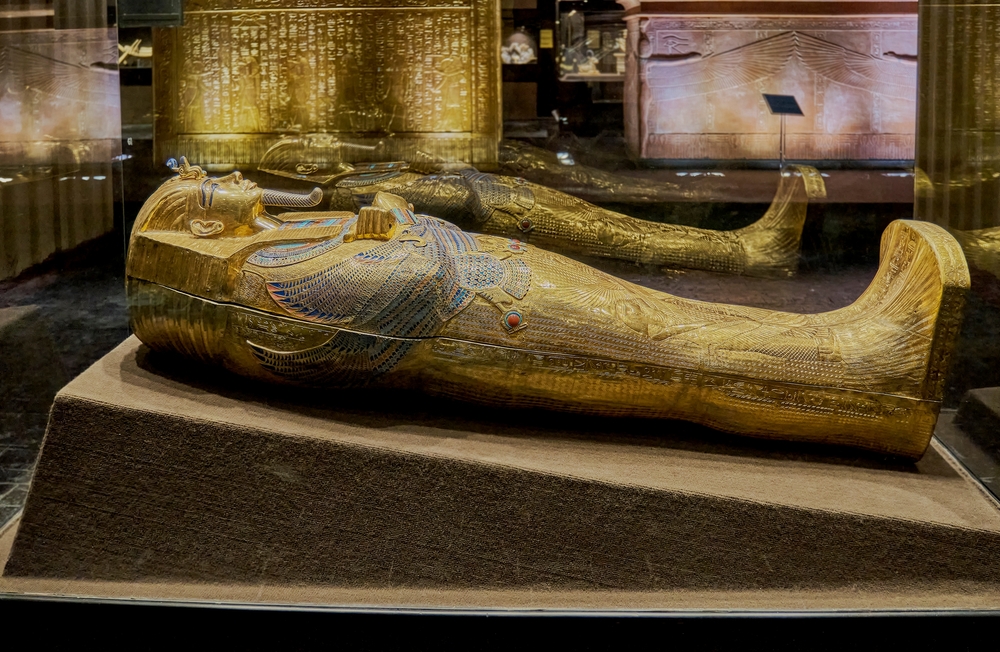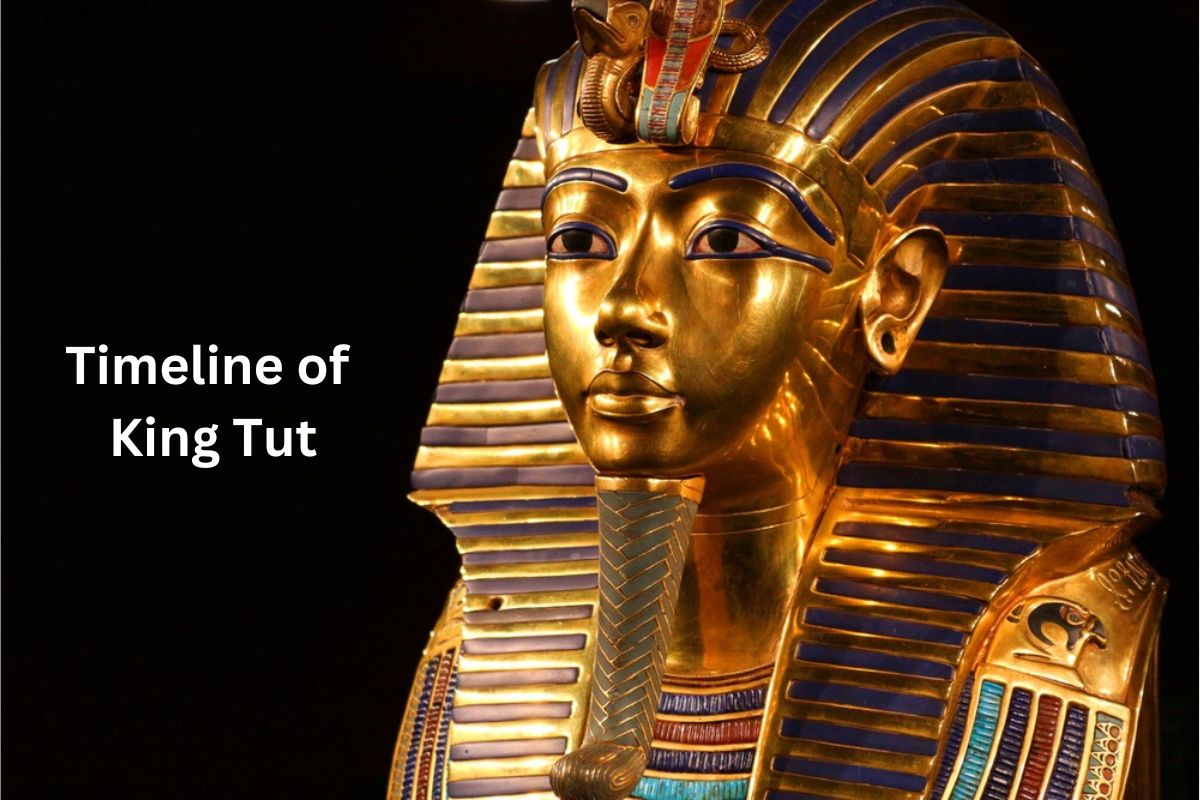Tutankhamun, often referred to as King Tut, was an Egyptian pharaoh of the 18th dynasty, ruling during a period known as the New Kingdom. He ascended to the throne at the young age of nine or ten, around 1332 BC, and his reign lasted until his death in 1323 BC.
Although relatively insignificant as a pharaoh when compared to other historical rulers of Egypt, Tutankhamun became globally famous in 1922 when archaeologist Howard Carter discovered his nearly intact tomb in the Valley of the Kings.
The wealth of artifacts and treasures found in the tomb offered a remarkable glimpse into the opulence of the Egyptian pharaohs and shed light on their cultural and religious practices.
Despite the mysteries surrounding his life and untimely death, Tutankhamun remains one of the most famous figures of ancient Egypt.
| Year (BC/AD) | Event |
|---|---|
| 1341 BC (Approximate) | Tutankhamun is born. |
| 1332 BC | Tutankhamun becomes pharaoh of Egypt at the age of nine or ten. |
| 1331 BC | Tutankhamun marries Ankhesenamun, his half-sister. |
| 1323 BC | Tutankhamun dies at the approximate age of 18-19. |
| 1323 BC | Tutankhamun is buried in his tomb in the Valley of the Kings. |
| 1922 AD | Tutankhamun’s tomb is discovered by Howard Carter and Lord Carnarvon. |
| 1923 AD | Lord Carnarvon dies, sparking rumors of a “curse”. |
| 1968 AD | X-rays suggest that Tutankhamun died from an infection following a broken leg. |
| 2005 AD | A CT scan shows that King Tut’s death may not have been the result of murder. |
| 2010 AD | DNA tests and further CT scans suggest that Tutankhamun might have died from complications related to malaria and a broken leg. |
| 2022 AD | A major new exhibition, “King Tut: Treasures of the Golden Pharaoh”, tours several major cities around the world. |
King Tut Timeline
1341 BC (Approximate) – Tutankhamun is born
Tutankhamun, originally named Tutankhaten, meaning “Living Image of Aten,” was likely born in the city of Akhetaten, a city established by his likely father, Pharaoh Akhenaten.
Akhenaten had established a monotheistic religion centered around the worship of the sun disc, Aten, a departure from the traditional Egyptian polytheism.
As a prince, Tutankhaten would have lived a life of luxury. He would have received a comprehensive education including lessons in writing, military tactics, history, and leadership.

1332 BC – Tutankhamun becomes pharaoh of Egypt at the age of nine or ten
Upon the death of Akhenaten, Tutankhaten ascended to the throne. His age upon ascension has been estimated at around nine or ten. Given his youth, the real power likely rested in the hands of his advisors, most notably Ay, who would later become pharaoh, and Horemheb, the commander of the army.
During the early years of his reign, there was a return to traditional polytheism and the worship of the god Amun. As part of this shift, the young pharaoh changed his name from Tutankhaten to Tutankhamun.
1331 BC – Tutankhamun marries Ankhesenamun, his half-sister
As was customary among Egyptian royalty, Tutankhamun was married to a close relative – his half-sister Ankhesenamun. Ankhesenamun was the third of six daughters born to Pharaoh Akhenaten and his Great Royal Wife, Nefertiti.
The couple had two daughters, both of whom were stillborn. The mummified remains of these infants were discovered in Tutankhamun’s tomb.
Despite the tragic loss of their children, artifacts found in Tutankhamun’s tomb, such as the golden throne, suggest a close and affectionate relationship between the pharaoh and his queen.
1323 BC – Tutankhamun dies at the approximate age of 18-19
The cause of Tutankhamun’s death has been a matter of great speculation and mystery. His sudden death at such a young age left many questions unanswered. Various theories have been proposed, ranging from murder to genetic disorders to complications from a broken leg.
Some early X-ray examinations suggested he had been struck in the back of the head, leading to theories he was assassinated, but later studies disputed this claim.
In 2005, a CT scan showed evidence of a fracture in his left leg, which had become severely infected. Combined with evidence of malaria parasites in his system, it’s plausible this combination could have been fatal.
1323 BC – Tutankhamun is buried in his tomb in the Valley of the Kings
Despite being a relatively minor pharaoh, Tutankhamun’s burial was still a significant event. His tomb, designated KV62, was filled with a wealth of artifacts and treasures, but it was modest in comparison to the tombs of more powerful pharaohs.
The fact that the tomb was not completely prepared at the time of his death suggests that he died unexpectedly. Notably, the walls of the burial chamber were simply painted, rather than being richly carved as was the tradition.

1922 AD – Tutankhamun’s tomb is discovered by Howard Carter and Lord Carnarvon
The discovery of Tutankhamun’s tomb by Howard Carter and his financial backer, Lord Carnarvon, was a momentous event in the field of archaeology. Despite initial disappointments in their search, the duo discovered the tomb’s entrance steps on November 4, 1922.
After a few days of careful excavation, they managed to reach the sealed entrance of the tomb. On November 26, they made a tiny breach in the top left hand corner of the doorway and Carter was able to peer in.
In response to Carnarvon’s question “Can you see anything?”, Carter replied with the famous words: “Yes, wonderful things.” The tomb was packed with an array of priceless artifacts and treasures, providing an unprecedented insight into the wealth, sophistication, and craftsmanship of ancient Egypt.
1923 AD – Lord Carnarvon dies, sparking rumors of a “curse”
Lord Carnarvon, the financial backer of Howard Carter’s expedition, died in Cairo on April 5, 1923, a few months after the tomb’s opening. His death was due to a mosquito bite which had become infected, leading to blood poisoning and pneumonia.
Newspapers sensationalized his death, linking it to the alleged “curse of the pharaohs,” which was said to bring death or misfortune upon those who disturb the tombs of ancient Egypt’s pharaohs. However, there is no scientific basis for this curse, and it’s generally regarded as a superstition.
1968 AD – X-rays suggest that Tutankhamun died from an infection following a broken leg
Over forty years after the discovery of Tutankhamun’s tomb, a series of X-rays were carried out on his mummy by a team led by R.G. Harrison of Liverpool University.
The X-rays suggested that Tutankhamun had a severely broken leg which could have become infected. This finding added a new dimension to the theories about his cause of death.
2005 AD – A CT scan shows that King Tut’s death may not have been the result of murderFor a long time, it was speculated that Tutankhamun was murdered, as an early X-ray analysis suggested a bone fragment inside his skull.
However, in 2005, a more detailed CT scan was conducted, which revealed that the bone fragment had likely been dislodged when Carter’s team removed the mummy’s golden mask.
The scan also confirmed the previous finding that Tutankhamun had a broken leg, supporting the theory that an infection from this injury may have contributed to his death.
2010 AD – DNA tests and further CT scans suggest that Tutankhamun might have died from complications related to malaria and a broken leg
In 2010, a team of scientists led by Zahi Hawass, Secretary General of the Supreme Council of Antiquities in Egypt, performed a series of DNA tests on Tutankhamun’s mummy.
These tests revealed traces of malaria parasites, the first time such an infection had been identified in an ancient mummy.
The team concluded that Tutankhamun may have died from complications of malaria combined with Köhler disease, a bone disorder, which would have weakened his physical condition, making him susceptible to severe complications from the broken leg.
2022 AD – A major new exhibition, “King Tut: Treasures of the Golden Pharaoh”, tours several major cities around the world
This exhibition, which celebrated the 100-year anniversary of the discovery of King Tut’s tomb, toured globally and featured over 150 authentic artifacts from Tutankhamun’s tomb, 60 of which had never previously left Egypt.
The exhibition provided a unique opportunity for the public to view these extraordinary artifacts and to learn more about the life, death, and legacy of Tutankhamun. It was an immersive experience that took visitors on a journey through the pharaoh’s passage into everlasting life, explaining the significance of the artifacts and how they were used in his burial process.
